The Roman Empire’s longevity and vast territorial expanse were due in no small part to its sophisticated network of Roman fortifications. These structures ranged from frontier fortresses designed to repel invaders to urban walls that safeguarded Rome’s teeming cities. By examining the top Roman fortifications, one gains a deeper insight into the military, economic, and social underpinnings of the ancient empire. These architectural marvels embody the innovative spirit of Rome’s engineers and the strategic prowess of its military leaders.
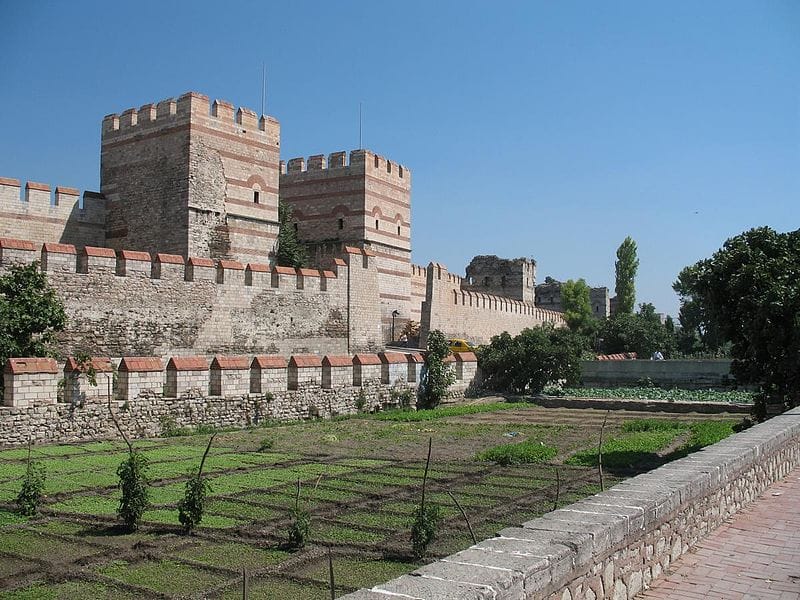
Before we continue to our Top 10 Roman fortifications, let’s say something about the history of these fortresses. Roman fortifications, spanning from the 3rd to the 5th centuries AD, evolved to meet the changing demands of the times, adapting new innovations and redefining their defensive capabilities. The significance of these structures is not simply historical; it also offers an archaeological narrative that informs our understanding of the Roman military and the daily lives of the soldiers. Set atop hills or straddling strategic riverine frontiers, these forts, walls, and refuges tell the story of a civilization that was constantly on the edge of innovation and survival.
Key Takeaways
- Roman fortifications were pivotal in the defense and expansion of the Roman Empire.
- Architectural developments were responsive to military needs across various terrains and periods.
- Examining Roman forts enhances understanding of ancient military strategies and engineering.
Historical Context of Roman Military Architecture
Development of Forts During Roman Expansion
The emergence and evolution of forts mirrored the strides and stretches of the Roman Empire. Initially, Roman camps were temporary structures built and dismantled, as legions marched across Europe. However, as Rome’s grip on conquered lands solidified, these temporary camps transformed into permanent fortresses. Across Britannia, for example, forts like Hadrian’s Wall underscored the frontier’s strategic significance and the need for defense.
In Dacia, the Roman army implemented a similar network of fortifications. This expansion brought forth an era where control over vast territories necessitated a shift from temporary camps to enduring fortresses designed not only for military efficiency but also as symbols of Rome’s power.
Strategic Significance of Fortifications
Throughout the Roman Empire, fortifications served dual purposes: asserting dominance and safeguarding borders – the limes. Key to controlling the fluctuating borders, fortifications were meticulously constructed with precise engineering and strategic placement.
In regions like Germania, Roman fortresses were constructed along the Rhine and Danube rivers, marking both the empire’s edge and acting as a deterrent for incursions. These structures allowed for rapid mobilization of forces, showcasing that the purpose of Roman military architecture extended beyond mere defense; they were integral to the very structure of military and political power. In Roman Britain, the strategic placement of forts along coastlines and significant land routes also reflected the nuanced and multifaceted role of military architecture in maintaining the empire’s expansive reach.
Notable Examples of Fortifications
Roman engineering prowess is exemplified by the impressive fortifications spanning the vast expanse of the empire, each with a unique story and strategic purpose. And here are some of the most important fortresses ever built.
1. Hadrian’s Wall and its Network (England/Scotland)
Hadrian’s Wall, constructed under Emperor Hadrian’s rule, marks a monumental effort to define the northern frontier of Roman Britain. Not merely a wall; this defense system included forts like Housesteads and Vindolanda, watchtowers, and smaller outposts forming an integrated network. The wall’s ruins, stretching across Northumberland, remain one of the most important testaments to Roman military organization and culture.
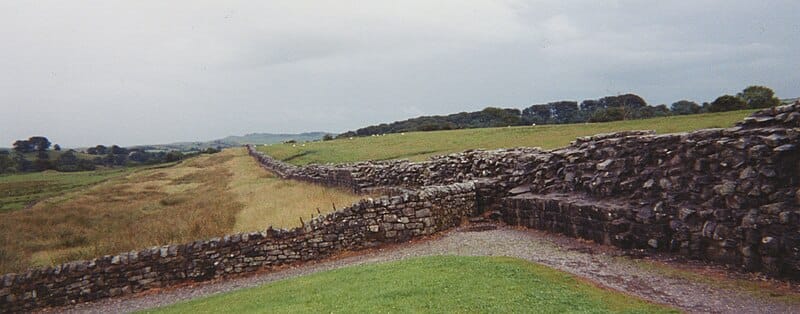
2. The Antonine Wall and its Purpose (Scotland)
Further north lies the Antonine Wall, a testament to Roman ambition. Built of turf and timber, it was a less permanent structure than its stone-built precursor, Hadrian’s Wall. This fortification, along with associated forts like Rough Castle, signified a short-lived Roman advance into Scotland, containing the unstable borders of the empire.
3. Theodosian Walls (Constantinople, Turkey)
In Constantinople, the Theodosian Walls once defended a city at the crossroads of continents. These formidable structures, with their triple-layered defense system, showcased advancements in military architecture and ensured the city’s resilience against numerous sieges. Theodosian Walls helped the Byzantine Empire to outlive its Western counterpart for almost a whole millennium.
4. Limes Germanicus (Germany)
The Limes Germanicus, a network of walls, forts, and ditches, stretched over 500 kilometers, guarding the Rhine-Danube frontier of the Roman Empire. Forts like Saalburg provided bases for Roman legions, reinforcing the presence of Rome in Germania.
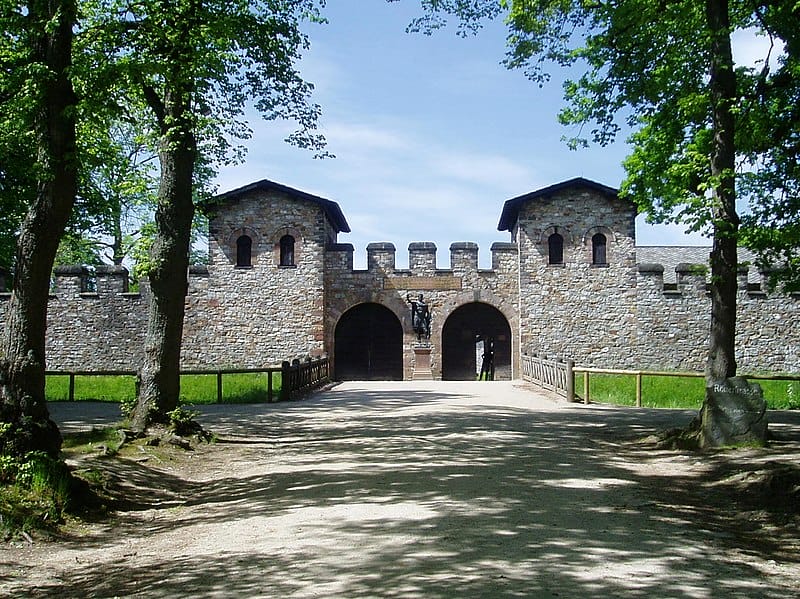
5. Trajan’s Wall (Romania)
To the east, Trajan’s Wall fortified the frontier against the tribes beyond. As Europe’s second-lengthiest wall after Hadrian’s Wall, it epitomized Rome’s reach and the necessity of a well-fortified boundary.
6. Fortifications of Alesia (France)
The site of Alesia, famous for Julius Caesar’s siege during the Gallic Wars, is surrounded by Gallic and later Roman fortifications. Those walls and ramparts were key in the pivotal confrontation that led to Roman victory and the assimilation of Gaul into the empire.
7. Walls of Rome (Italy)
Rome itself, the heart of the empire, was encircled by the Aurelian Walls. These fortifications, later expanded by emperors, provided protection for the ancient metropolis, mirroring the strength of the empire they stood to defend.
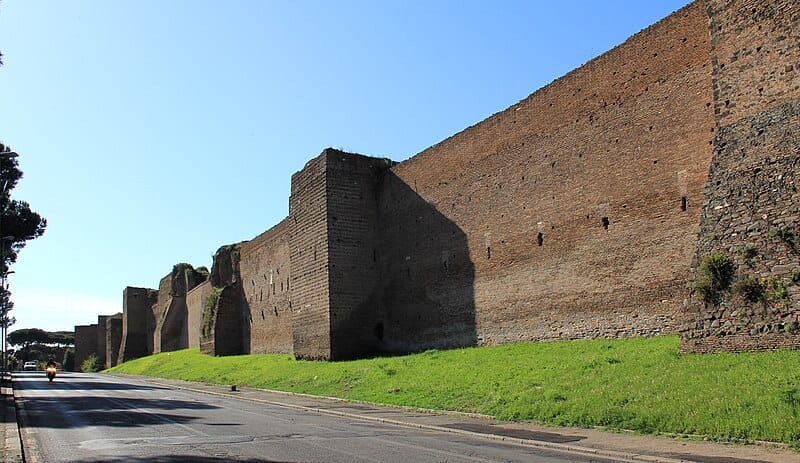
8. Walls of Babylon (Egypt)
The Romans also fortified existing structures, such as the ancient Walls of Babylon in Egypt. The Roman fortifications added to these walls demonstrated a blend of the empire’s military expertise with local traditions.
9. The Fortress of Masada – The Ramp (Israel)
Perched on a plateau with sheer drops, the Fortress of Masada siege ramp showcased Roman engineering adapted to challenging terrains. The famous ramp still stands today.
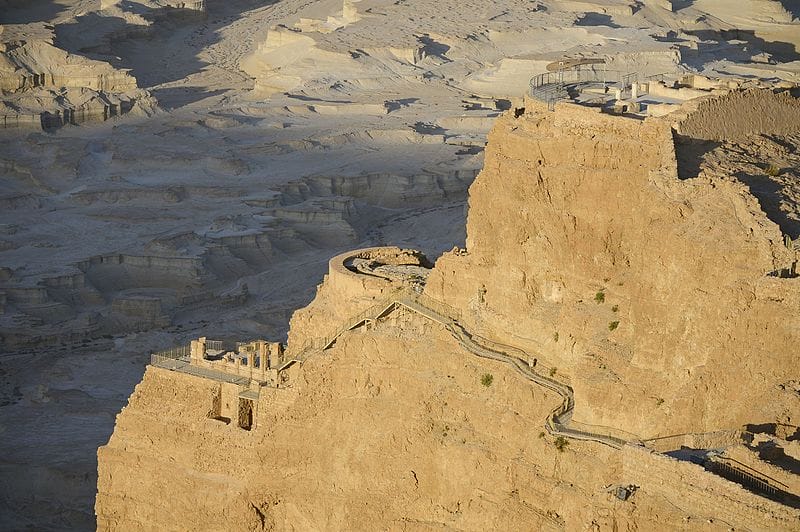
Source: Andrew Shiva / Wikipedia
10. Caerleon – Isca Augusta (Great Britain)
In Britain, Caerleon, or Isca Augusta, housed a permanent legionary fortress. Its remains, including impressive defenses, barracks, and an amphitheater, underscore the military might and urban planning skills of the Romans in Britannia.

Source: Gaeltacht1973, CC BY 3.0 https://creativecommons.org/licenses/by/3.0, via Wikimedia Commons
People Also Ask:
Which are the most well-known Roman fortifications?
Hadrian’s Wall and Antonine Wall in Britain, along with the Limes Germanicus in Germany, stand out among the most famous Roman fortifications. They marked the boundaries and demonstrated Rome’s ability to control its frontiers.
Can you list significant Roman forts outside of Italy?
In Britain, forts such as Housesteads and Chester were key to maintaining the empire’s power. In Germany, Saalburg fort served as a part of the limes, whereas in the Middle East, forts like Dura Europos protected the desert frontier.
What is the structure and layout typical of a Roman fort?
A standard Roman fort had a rectangular plan with rounded corners, encompassing barracks, storerooms, workshops, and headquarters. A surrounding wall and ditches usually fortified the entire complex, with gates positioned on all four sides aligned with two intersecting main streets.
Which Roman fort is considered the best preserved?
The fort at Portus Itius, known today as Boulogne-sur-Mer, is often recognized for its preservation. Its remnants provide extensive insights into Roman military architecture.
How did Roman fortifications influence battle strategies?
Roman fortifications served as defensive strongholds, border controls, and local power projections. The presence of Roman fortifications enabled the Romans to secure territories, control local populations, and manage logistics, significantly impacting their overall military tactics.
What are some notable Roman fortifications that still exist today?
The ruins of Masada in Israel, Timgad in Algeria, and the richly decorated Caerleon in Wales are prominent remnants of the Roman era. Their preserved structures offer a glimpse into the ancient empire’s architectural prowess.
Hello, my name is Vladimir, and I am a part of the Roman-empire writing team.
I am a historian, and history is an integral part of my life.
To be honest, while I was in school, I didn’t like history so how did I end up studying it? Well, for that, I have to thank history-based strategy PC games. Thank you so much, Europa Universalis IV, and thank you, Medieval Total War.
Since games made me fall in love with history, I completed bachelor studies at Filozofski Fakultet Niš, a part of the University of Niš. My bachelor’s thesis was about Julis Caesar. Soon, I completed my master’s studies at the same university.
For years now, I have been working as a teacher in a local elementary school, but my passion for writing isn’t fulfilled, so I decided to pursue that ambition online. There were a few gigs, but most of them were not history-related.
Then I stumbled upon roman-empire.com, and now I am a part of something bigger. No, I am not a part of the ancient Roman Empire but of a creative writing team where I have the freedom to write about whatever I want. Yes, even about Star Wars. Stay tuned for that.
Anyway, I am better at writing about Rome than writing about me. But if you would like to contact me for any reason, you can do it at contact@roman-empire.net. Except for negative reviews, of course. 😀
Kind regards,
Vladimir
